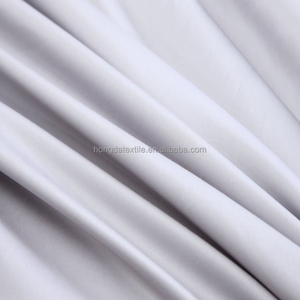
High-quality Cotton-poly Interweave Large Waffle Knit Fabric Firm Stretchy Soft Non-deformable For Sportswear Pants


300TC 400TC 500TC 600TC 100% Cotton Fabric For Making Bed Sheets Sateen Fabric Plain Dyed COMBED In Free Charge Woven 110"























Cotton interlining stands as a crucial textile in the fashion and garment industry, providing structure and comfort to various apparel. This fabric is a staple in the production of shirts, shirt collars, and other garments, offering a blend of durability and softness. The versatility of cotton interlining fabric makes it a preferred choice for designers and manufacturers alike.
Interlining comes in several types, each serving a specific purpose. Cotton fusible interlining is popular for its ease of application, adhering to outer fabrics with heat to give garments a crisp finish. Non-fusible variants, such as cotton domette interlining, are sewn in and often used for heavier applications. Features like eco-friendliness and shrink-resistance are common, with materials like PA and HDPE enhancing the functionality of these interlinings.
The application of cotton interlining extends beyond shirts to include areas like curtain manufacturing. Bump curtain interlining, for instance, adds weight and drape to curtains, enhancing their aesthetic and insulation properties. The advantages of using cotton interlining are manifold, including improved garment structure, longevity, and wearer comfort.
Cotton interlining is produced from various materials, each selected for its specific qualities. Options like pre shrunk bump interlining ensure that the fabric maintains its dimensions after washing. Sustainability is a key consideration, with many cotton interlinings being produced with an eye towards environmental impact.
Selecting the appropriate interlining is vital for the desired outcome of a garment. Factors such as weight, bonding type, and color (with options like white, black, and gray) play a role in the selection process. For lighter applications, lightweight domette may be ideal, whereas heavier garments might require a more robust solution like cotton bump interlining.
Quality is paramount when it comes to interlinings. Products like vilene g710, known for their consistent performance, are among the materials that meet stringent industry standards. Compliance with eco-friendly practices is also a significant factor in the production and selection of cotton interlining materials.